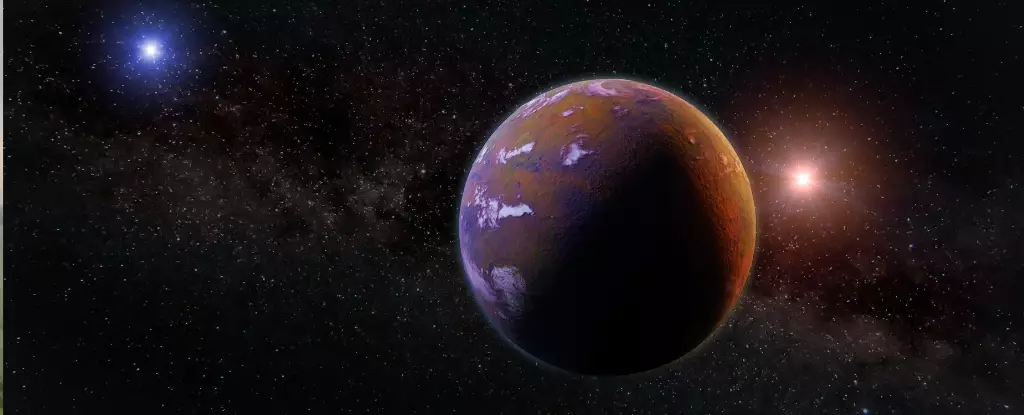The universe continues to surprise astronomers with its intricate processes and hidden complexities. For decades, the prevailing understanding held that planets form within dense, dusty disks surrounding young stars, known as protoplanetary disks. These disks serve as cosmic nurseries—a chaotic blend of gas, dust, and various elements—where planetary bodies coalesce over time. However, recent discoveries challenge this narrative by revealing that planet formation is a far more dynamic and nuanced process than previously thought. This insight compels us to reevaluate the conventional models and explore the possibility that planets can emerge under a broader range of conditions, even after the round-the-clock activity of dust and gas subsides.
What is particularly compelling about this emerging evidence is the notion that once the nascent star has cleared away its dusty cocoon, it might still host planets—planets that are otherwise hidden from view in dusty environments. This idea flips the traditional perspective, suggesting that we may have been looking for planets in the wrong places or at the wrong times. It introduces the exciting possibility that planetary systems could remain active and evolving well after their initial formation phases have ended, hinting at a more prolonged and resilient process than previously assumed.
A Breakthrough Through Comparative Binary System Studies
The recent discovery of a giant planet orbiting the primary star in the binary system HD 135344 AB exemplifies this paradigm shift. The system, located roughly 440 light-years away, consists of two young stars—an A-type primary and an F-type secondary—whose evolutionary paths diverge. While the secondary star continues to nurture its protoplanetary disk and potentially form planets, the primary star has already cleared its dusty environment, rendering it seemingly inhospitable to planet formation.
This dichotomy offered astronomers a unique natural laboratory to explore the timeline of planetary genesis. For years, the secondary star’s complex disk—replete with spiral structures, cavities, and shadows—suggested ongoing planet formation, but the primary’s clean environment implied a finished chapter. Yet, with advanced imaging technologies, researchers uncovered a startling fact: the primary star hosts a young, sizable planet, estimated at about 10 Jupiter masses, orbiting at a distance comparable to the outer reaches of our solar system.
This discovery decisively demonstrates that planets can form relatively late in the life cycle of a star’s protoplanetary disk, or perhaps—even more astonishingly—that planet formation can continue or restart after the initial dusty environment dissipates. It underscores the importance of continuously examining seemingly “clean” stars, which might have been previously overlooked in the hunt for exoplanets. Such stars could be treasure troves, hiding worlds that went undetectable amid dusty shadows.
The Power and Precision of Next-Generation Imaging Technologies
Capturing images of exoplanets directly is no small feat; it requires cutting-edge technology, patience, and sometimes a dash of luck. The recent detection of HD 135344 Ab was possible thanks to instruments like the European Southern Observatory’s Very Large Telescope (VLT) equipped with the SPHERE instrument—a marvel of modern astronomical engineering designed specifically to pinpoint faint objects orbiting bright stars. Over four painstaking years, astronomers meticulously tracked the suspected planet’s movement, confirming its planetary status through its shared motion with the host star.
What makes this achievement extraordinary is that the images obtained are truly direct—visual evidence that the object is an orbiting planet rather than a background star or an artifact of the observation process. Still, the images do not reveal planetary details such as surface features; rather, they serve as powerful confirmations that planets can be observed at relatively close separations, a region that was once considered too challenging for direct imaging. The planet’s orbit—lying within what is known as the snow line—highlights the significance of this region for giant planet formation, offering a glimpse into the processes that shaped our own solar system.
Moreover, this discovery exemplifies the crucial role that high-precision astrometry plays in differentiating genuine planetary signals from background noise or unrelated stars. By combining multiple observational techniques and data from missions like Gaia, astronomers can accurately map orbital motions, ruling out false positives and ensuring that what we see is a real planet, not a cosmic mirage.
Implications for Our Understanding of Planetary Populations
Discovering a planet around a star that has already cleaned its surrounding dust reshapes the landscape of exoplanet demographics. Prior surveys suggested that giant planets at wider separations—beyond 20 astronomical units—are relatively rare, leading to the belief that large planets form predominantly in the outer regions of young disks. However, the detection of a midsize planet in a relatively close orbit challenges this view, hinting that planets might be more common in these zones than we thought, especially in systems that have evolved beyond the initial dusty phase.
Future technological advancements, such as the upcoming European Space Agency’s Gaia DR4 release and the soon-to-be-operational Extremely Large Telescope (ELT), promise to exponentially increase our capacity for discovering and characterizing these worlds. The ELT, which is poised to see first light in 2029, will deliver unprecedented resolution and sensitivity, enabling astronomers to probe the composition, atmospheres, and even potential habitability of these planets.
If a population of young giant planets like HD 135344 Ab exists in diverse environments, it might revolutionize our understanding of planetary formation timescales and mechanisms. It raises provocative questions: Are we witnessing a phase of planet formation that extends far beyond the early protoplanetary period? Do some planets form later, possibly through dynamic interactions or disk instabilities that persist after dust dispersal? The answers to these questions will be pivotal in understanding the true diversity of planetary systems in our galaxy.
Rethinking Where and How We Search for Exoplanets
This breakthrough invites a shift not only in observational techniques but also in strategic thinking. Instead of targeting only young,

